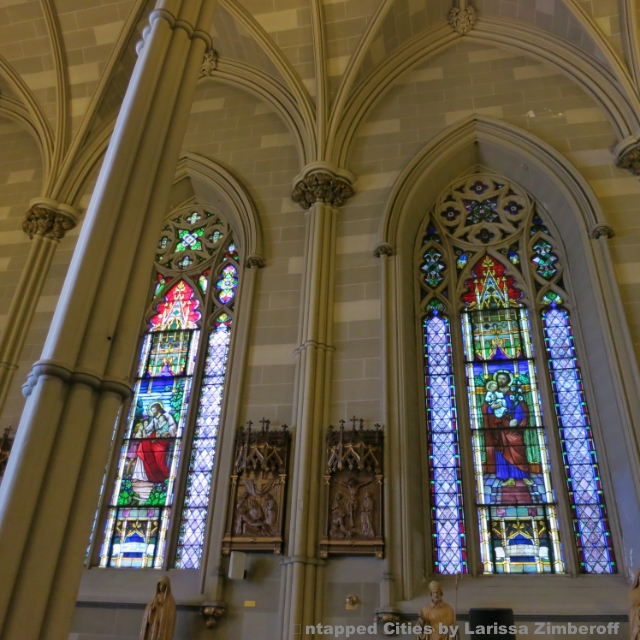5. St. Patrick’s Old Cathedral was the original cathedral of the Archdiocese of New York

As the original cathedral of the Archdiocese of New York, the Basilica of St. Patrick’s Old Cathedral can trace its roots back to St. Peter’s Church — the first Roman Catholic church in New York City. Located on Barclay Street, Saint Peter’s Church was founded in 1785. By the early 19th century, with New York City’s Catholic population on the rise, Anthony Kholman, a Jesuit rector at the church, proposed that a second sanctuary and cathedral for the first bishop be built. 260 Mulberry Street, the site chosen by Kholman, was located within the second cemetery of St. Peter’s Church, meaning that the graves needed to be relocated before construction could begin.
Built from 1809 to 1815, the Basilica of St. Patrick’s Old Cathedral was designed by Joseph-Francois Mangin in the Gothic Revival style. After opening, the cathedral became the primary burial ground for the Catholic community of New York City. In addition, below the cathedral are a series of crypts— the only catacombs left in Manhattan. Many members of the Catholic faith were enclosed in these brick and cement crypts, belonging largely to wealthy bankers, lawyers, captains of industry, merchants, and even Civil-War generals.
The Basilica of St. Patrick’s Old Cathedral remained the seat of the archdiocese until the current St. Patrick’s Cathedral opened in Midtown in 1879, though the church remains operational today. In 1966, the cathedral was named a New York City landmark and was added to the National Register of Historic Places in 1977. It would later gain its basilica title from Pope Benedict XVI on Saint Patrick’s Day in 2010.





